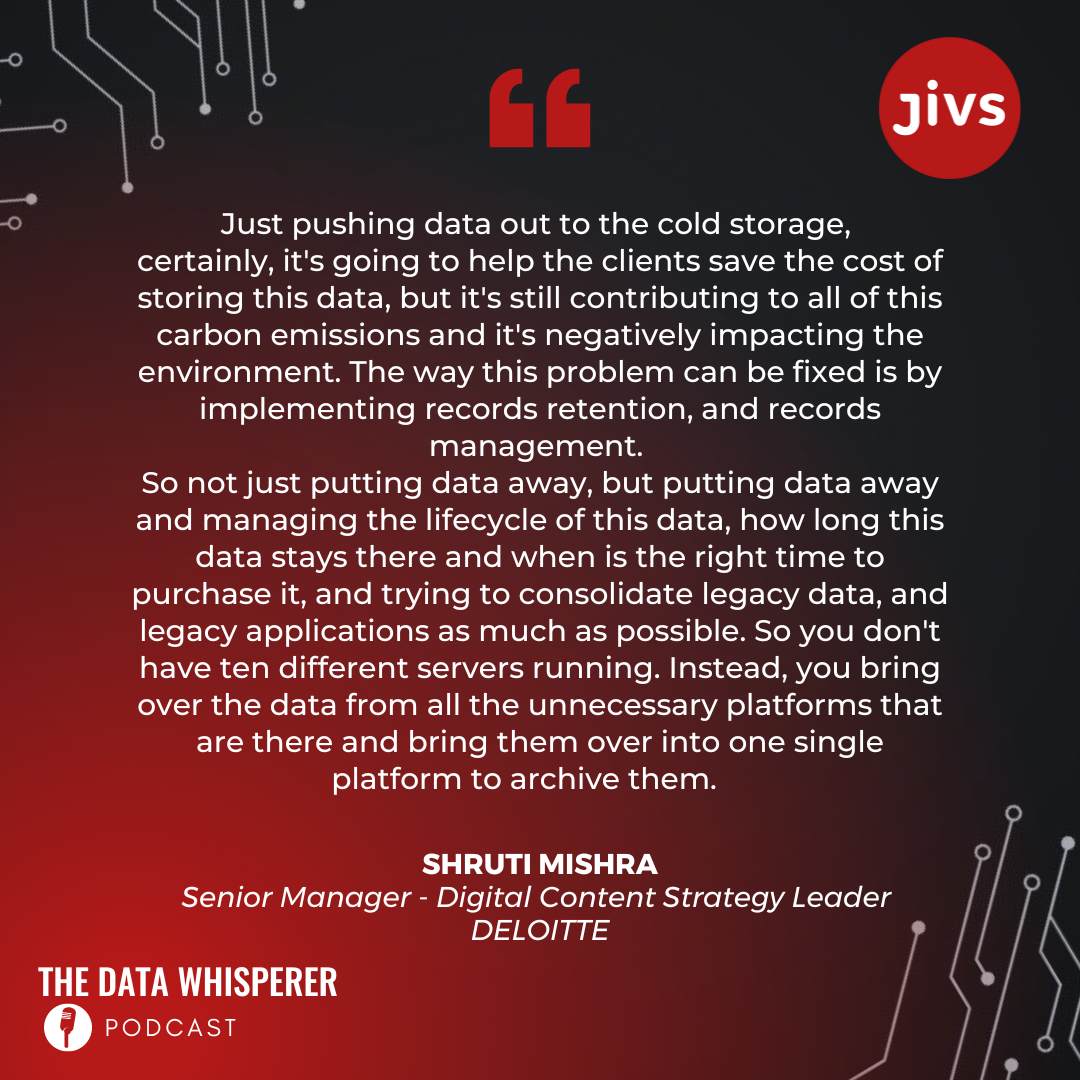In all four corners of the world, data waste in companies is a hidden problem that is simmering away and will only get worse – unless continuous action is taken to minimize it. In this blog, we look at what data waste is, how it impacts the environment, system performance, and operating costs, and what steps companies can take to reduce their own data waste.
1. What is Data Waste
Forbes describes data waste as the inefficient or ineffective use of data. It is also a missed opportunity to derive value from data and generally involves extensive data storage infrastructure that is expensive to run.

Considering that companies generate vast amounts of data on a daily basis, eventually this data will become redundant, outdated, or obsolete. In addition, a certain amount of it is likely to be inaccurate or duplicated, even stored in silos, unnecessarily consuming high quantities of electricity. Failure to put in place measures to control and limit data hoarding, and ultimately data waste, can slow down system performance and result in longer processing times. A challenge that organizations therefore face is how to manage ever-growing data volumes and reduce data waste in a way that is cost-effective and energy efficient.
3. How Data Waste Impacts Data Migration
The amount of unnecessary data due to inaccuracies, errors, and duplications can vary from one company to another. But as a company embarks on a system migration project, data waste caused by this unnecessary data can increase the complexity of mapping and transformation processes, multiplying both the effort and the time needed to successfully complete the migration. Identifying and processing this unnecessary data is generally very complex and time consuming, requiring many hours of human effort. And, of course, a longer migration process is inevitably going to lead to higher project costs.
4. What is the Alternative?

With the cloud-based JiVS Information Management Platform from Data Migration International, companies have a solution for continually reducing data waste.
Data is extracted from an unlimited number of legacy systems from different vendors, is massively compressed, and stored centrally together with its business context on JiVS.
Not only is the data footprint now a fraction of its original size, in some cases up to 90% smaller, it is also stored together in one place, which means only one license is needed. In addition, the energy costs much lower compared to running individual legacy systems, which means far less energy is wasted.
To derive usable intelligence and value from data, it needs to be accessible and integrated – JiVS provides the answer here as it integrates with any system.
Users can call up historical data via the operational system in real time and use it for analyses and reporting to deliver insights. In addition, once data has reached the end of its legal retention period, it is automatically deleted by JiVS, no longer taking up precious storage space.
4. Cleanse, Harmonize, Optimize
Cleansing, harmonization, and optimization are crucial for reducing data volume and data waste. Before legacy data is historized on JiVS it is cleansed to eliminate duplicates, inaccuracies, and errors, reducing the data volume. Prior to migration, the operational data is cleansed, harmonized, and optimized to enhance the quality and reduce the data footprint. Minimizing data volume helps to reduce data waste, and JiVS integrates seamlessly with the live operating system, continually archiving obsolete or infrequently accessed data through automated processes. Besides keeping the new system lean, this also helps maximize its performance and optimize storage utilization, which are important factors when migrating to a new ERP system like SAP S/4HANA.
Reducing data waste should be a part of the wider data strategy to maximize ROI, keep operating costs down, and minimize data footprint. With JiVS, both the legacy data and the operational data are stored and managed more efficiently, leading to better system performance, lower energy consumption, and a massive reduction in operating costs. Through this approach, companies can enhance data integrity, minimize data waste, keep their live system lean and optimized, and achieve greener, more sustainable IT operations. Read more about JiVS here.
To learn more about the challenges and solutions surrounding data waste and its environmental impact, check out The Data Whisperer Podcast episode “Sustainable Data Management: Navigating Data Waste and Environmental Impact” with Shruti Mishra, a Digital Content Strategy Leader at Deloitte. Shruti shares her insights and expertise on how to navigate the complexities of data waste and uncover actionable steps that individuals and businesses can take to minimize their environmental impact while still harnessing the benefits of a data-driven world.
To find out more, contact the data migration experts at DMI.

Author: Benjamin Kaulich
Senior Account Executive DACH, Data Migration International
